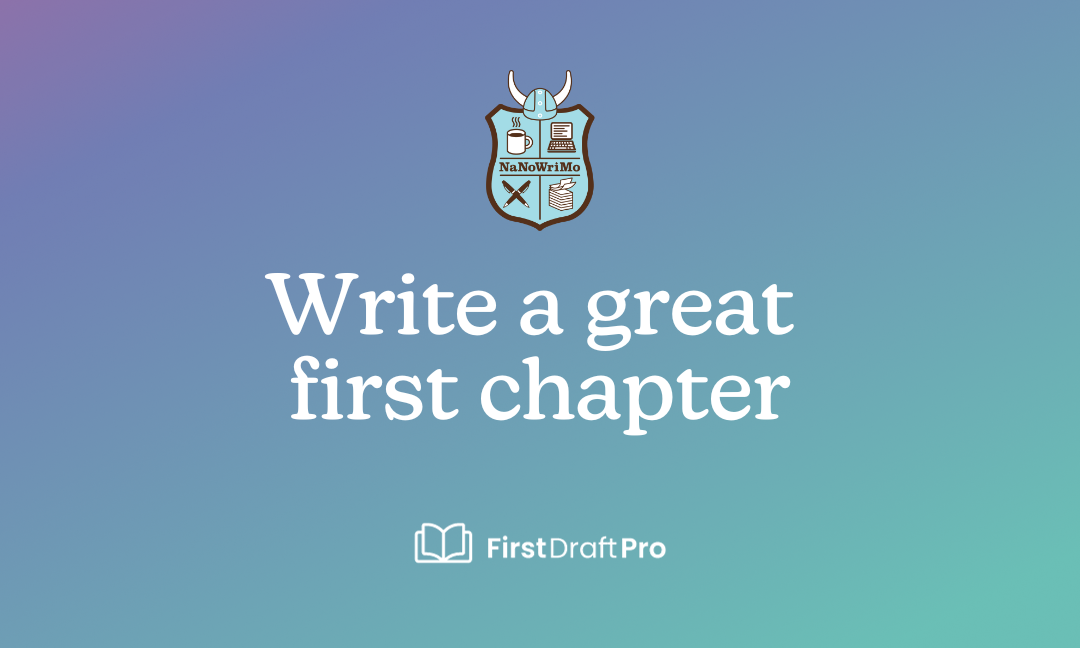Eight parts to a great first chapter in your NaNoWriMo novel

The blank page can be a little intimidating, but a strong start will stand you in good stead for the rest of the Nanowrimo challenge! Remember, you’ve already put a lot of work into planning your outline, developing your characters, and doing your background research. All you’re doing now is putting that work into action.
It can help to write out a concrete checklist of things you should achieve in your first chapter. You can save this as a note in First Draft Pro and keep it handy for whenever you need to refocus. This frees you up to enjoy the fun part – writing!
We're of the opinion that there are eight key elements to a great first chapter. You can use this list as the basis for your first chapter checklist, and copy or customise it as you please:
- Have a mini-storyline for the chapter. Your first chapter is about exposition, but try to resist getting bogged down in description. It can be helpful to think of a mini storyline to carry your chapter along. Ensure you have a clear beginning, middle, and a good resolution.
- Kick it off with a bang. Grab your reader’s attention and make them want to keep reading.
- Hello to the hero! Establish your main character in their world. Show your reader who they are, who’s around them, and what they want.
- Meet any genre expectations for your reader. Make the most of the conventions of your genre to set your reader’s expectations of what’s to come.
- Allude to the central question. What big question is your story interrogating or trying to answer? This is your story's central theme. It can be something general like ‘Are people inherently evil?’ or ‘Is love enough?’.
- Allude to the central conflict. Make reference to the central conflict of the story. This usually arises out of tension between your protagonist’s internal and external goals.
- Something wicked this way comes. Use the conflict between your protagonist’s internal and external goals to show your reader that something is coming – and that something is bad for our hero. This is how you foreshadow your first plot point.
- Leave ‘em hanging. Having a good resolution to your chapter’s mini-storyline doesn’t mean resolving everything! Get those pages turning by finishing with something that intrigues your reader and makes them want to continue reading.







